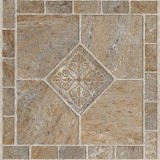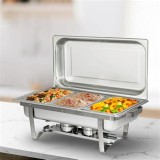The Warmest Clothes for Winter: Essential Aspects
As the cold winter months approach, staying warm and comfortable is crucial. Choosing the right clothes can make a world of difference in protecting yourself from the elements. Here are some essential aspects to consider when selecting the warmest winter garments:
1. Insulation:
Insulation is key for trapping body heat and preventing it from escaping. Look for clothes made from materials with high thermal resistance, such as down, synthetic insulation, or wool. Down is considered the warmest natural insulator, but synthetic insulation offers comparable warmth while being more water-resistant.
2. Layering:
Layering is a fundamental principle of winter dressing. Start with a base layer that wicks moisture away from your skin, such as a merino wool or synthetic base layer. Add a mid-layer for insulation, and finish with a waterproof and breathable outer layer to keep out snow and wind.
3. Cover the Extremities:
Your extremities are particularly vulnerable to cold. Invest in warm hats that cover your ears, gloves, and thick socks. Choose materials that retain heat effectively, such as wool or fleece-lined gloves, and consider adding glove liners for extra warmth.
4. Waterproofing:
Staying dry is essential for maintaining body temperature. Look for outer layers that are waterproof or water-resistant. Seam sealing enhances waterproofness, preventing water from seeping through the seams of the garment.
5. Breathability:
While keeping warm is important, breathability is also crucial. Choose clothes that allow excess body heat and moisture to escape, preventing sweat from accumulating and making you feel cold. Waterproof-breathable fabrics, such as Gore-Tex, offer the best balance of protection and breathability.
6. Fit and Comfort:
The fit of your winter clothes is vital for both warmth and comfort. Loose-fitting clothes allow air to circulate, which can reduce insulation effectiveness. On the other hand, tight-fitting clothes can restrict movement and make you feel uncomfortable. Choose garments that fit snugly but allow for easy movement.
7. Accessories:
Accessories can provide additional warmth and comfort. Neck warmers, scarves, and earplugs can help protect exposed skin from cold and wind. Consider using hand warmers or heated gloves if you're planning to spend extended periods outdoors.
8. Personal Preferences:
While these aspects provide a general framework, personal preferences and activities also play a role in choosing the warmest clothes for winter. Consider the intensity and duration of your outdoor activities, and adjust your wardrobe accordingly.
By carefully considering these factors, you can select the warmest clothes for winter that meet your specific needs and keep you comfortable even in the coldest conditions.

How To Dress Warm For The Winter Without Feeling Bulky

Cold Weather Clothing Guide Fabrics That Retain Heat Usa Blog And News Articles From Iceland Icewear

Extreme Cold Weather Clothing Modern Winter Gear For The Coldest Conditions 2024

30 Cute And Comfy Winter Outfits To In 2024

Extreme Cold Weather Clothing Modern Winter Gear For The Coldest Conditions 2024
Feeling The Chill These Are Warmest Materials For Winter Abc Everyday

The Tuck 360 Blog What To Wear Stay Warm This Winter

Nine Warmest Fabrics To Consider For Your Winter Coat
Which Is Warmer In Winter Wearing Several Thin Layers Of Clothing Or One Thick Layer Arabiaweather

Best Winter Essentials That Will Keep You Warm While Looking Stylish Misskyra Com








